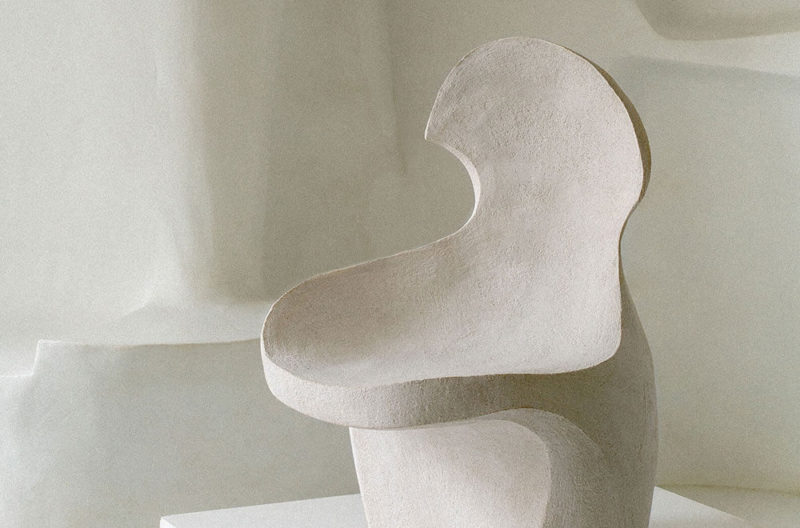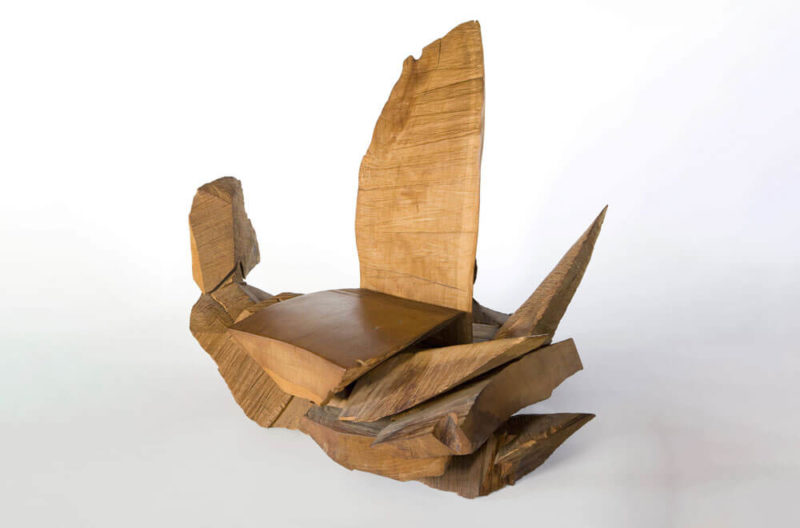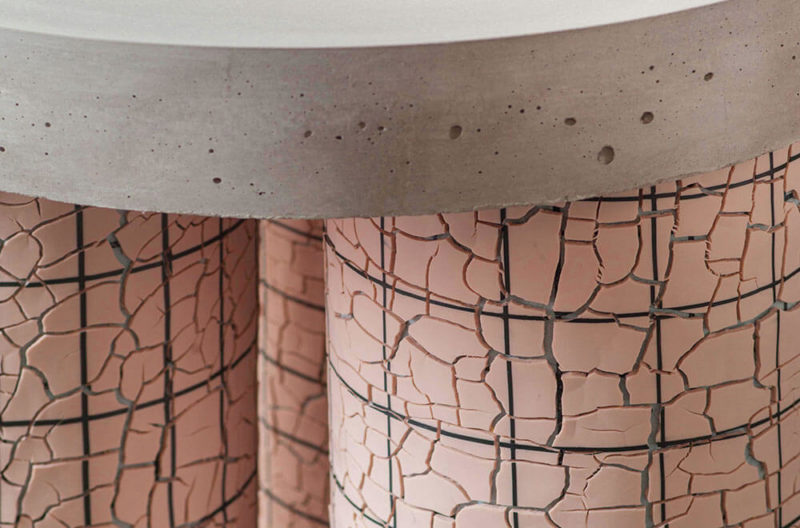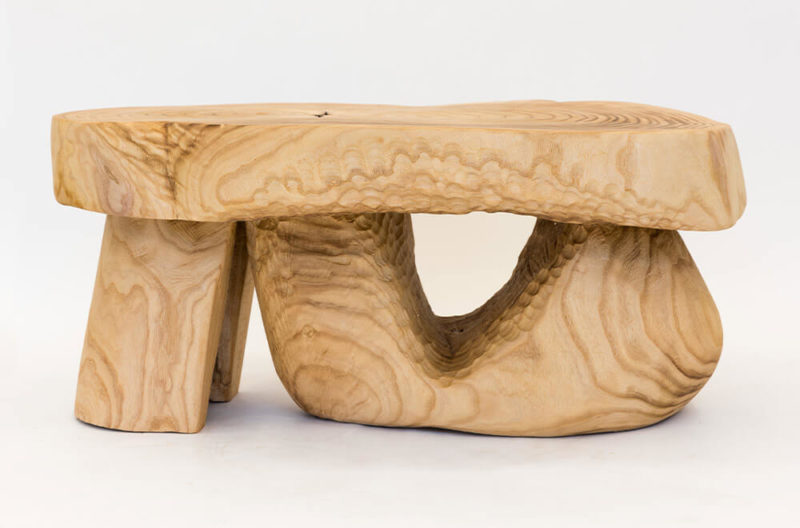Max Lamb / Wood, Stone
The British designer continues his rigorous exploration of ancient and contemporary making processes with two new collections.
Salon 94, New York
30th June – 27th August 2021
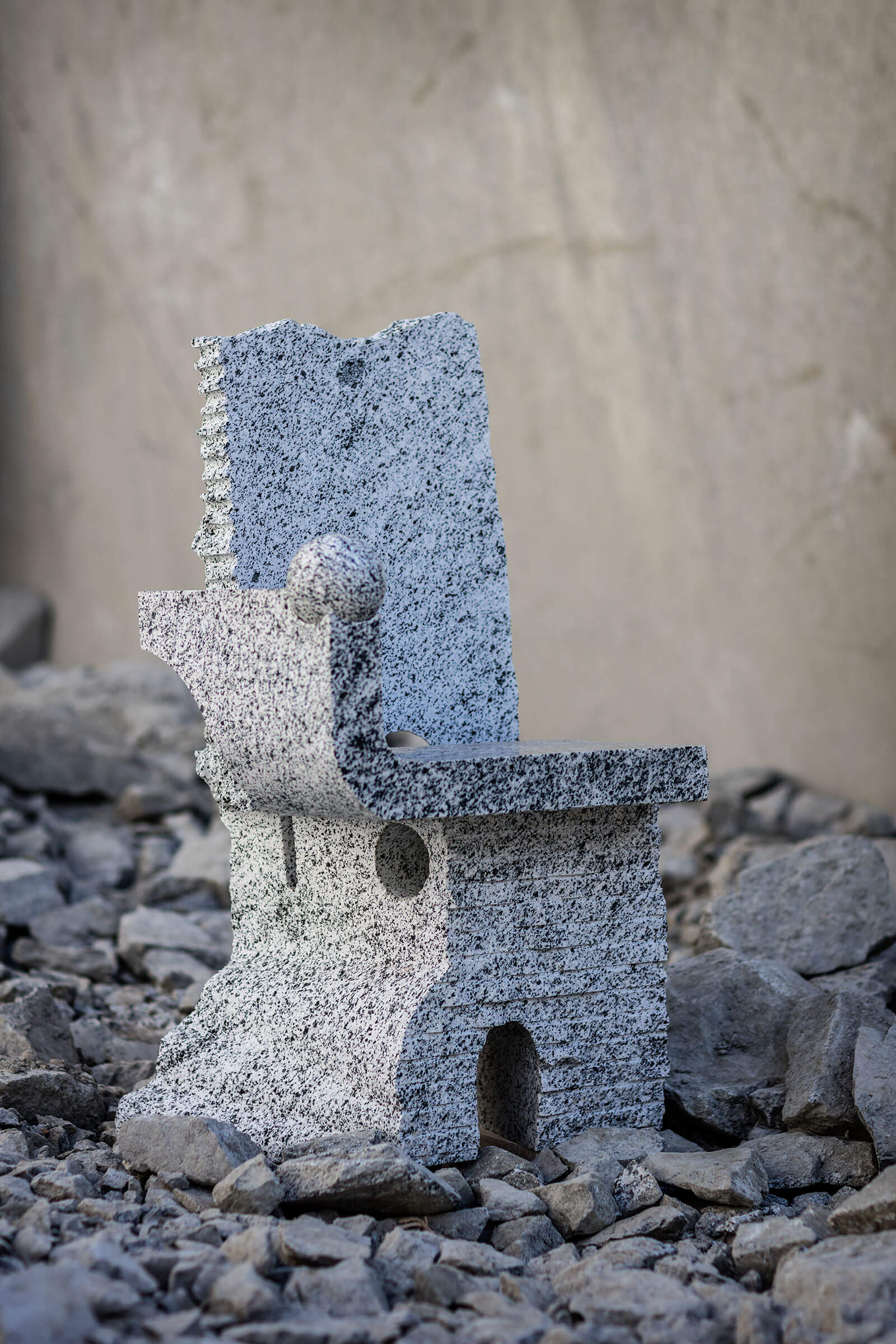
Max Lamb, ‘Campione’ chair, 2016
COURTESY: Max Lamb and Salon 94 Design, New York
A VISITOR WALKING through the doors of Salon 94’s new Rafael Viñoly-renovated flagship gallery will find a long line of assembled wooden-block settees abutting roughly-hewn stone chairs and vessel-like boulders. Though this pairing might seem jarring, or even out of place at first glance, on closer inspection you begin to comprehend the implicit child-like play that ties these two series together.
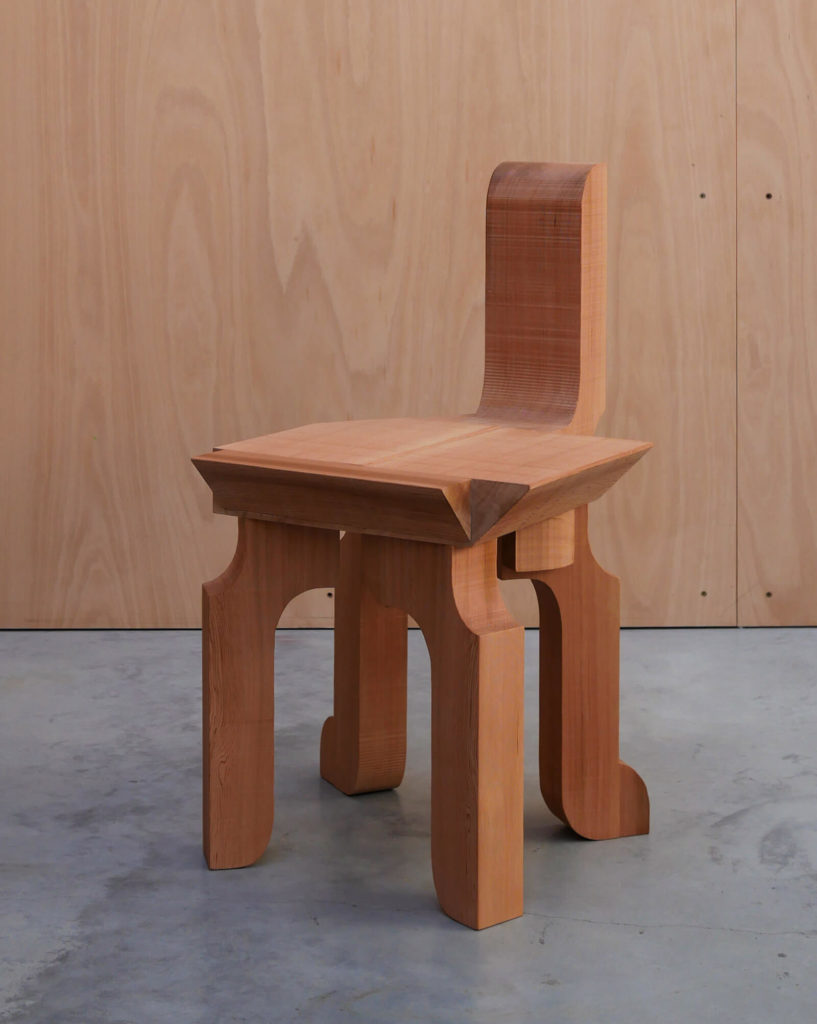
Max Lamb, ‘6 x 8 Chair’, 2021
COURTESY: Salon 94 and Max Lamb
Produced by illustrious British designer Max Lamb, the works reflect his career-consuming quest to better understand and communicate various making techniques, if not the innate qualities of material as well. This latest output takes his quintessentially iterative approach to the next level. It finds its footing in one of the most fundamental typologies of design – the chair – and the nature of assembly and construction that is so essential to this discipline.

Work in progress
COURTESY: Max Lamb and Salon 94 Design, New York
Occupying the first floor of the recently opened gallery complex, the ‘Wood, Stone’ exhibition is an impressive waypoint in the designer’s ongoing investigation of both contemporary and age-old production technologies. These explorations often anchor in the elemental practices of cutting, carving and casting. The clarity and serenity of these forms demonstrate Lamb’s unabashed and unjaded focus, one that veers far away from any set aesthetic, or threadbare stylistic reference. Mounted by the Salon 94’s Design program, this showcase offers numerous visual and tactile complexities.

Max Lamb, ‘Dolomite Boulder Chair’, 2020
COURTESY: Salon 94 and Max Lamb
“Lamb has worked closely with the stone supplier for the past five years and is unhurried in his harvest”
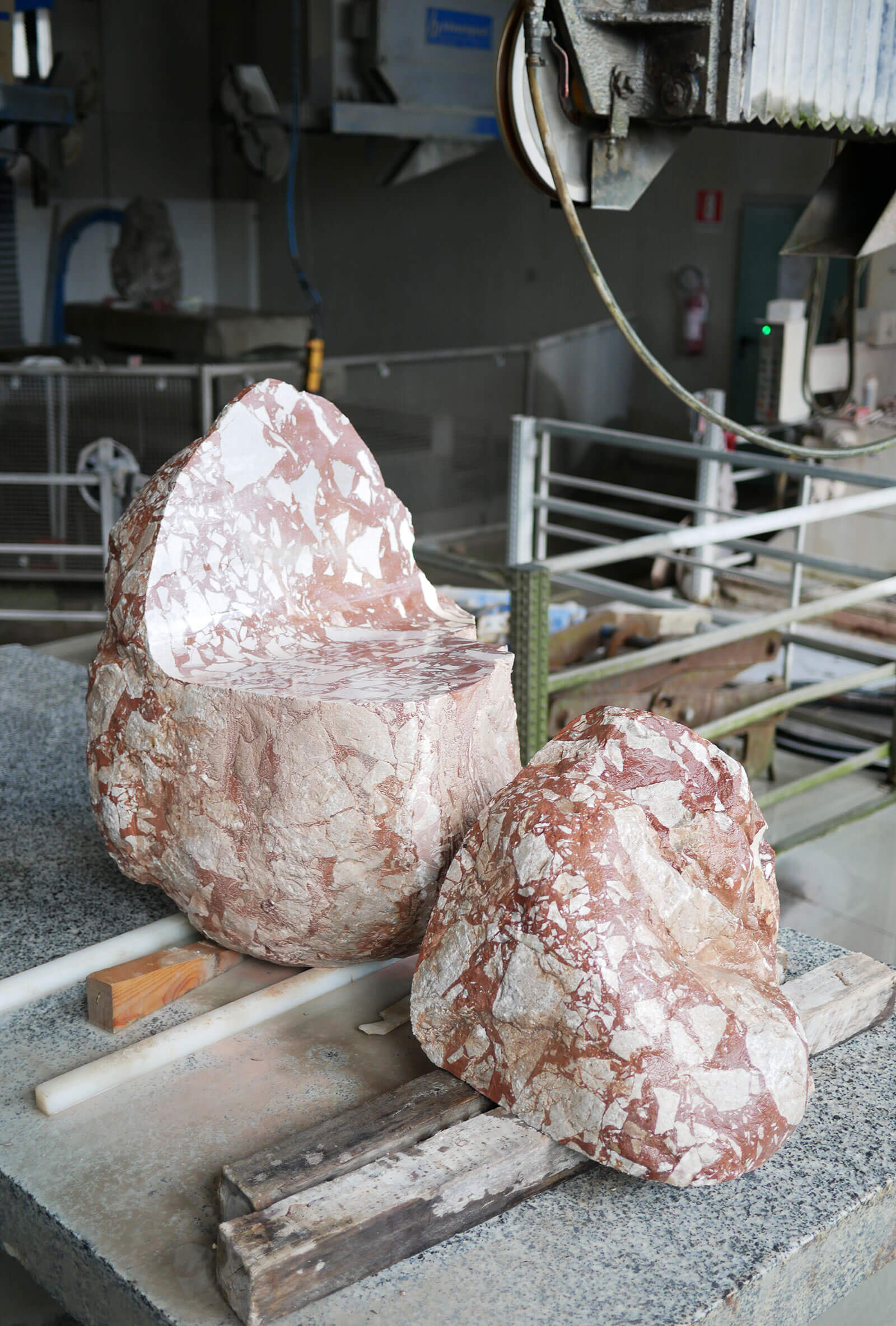
Max Lamb, ‘Dolomite Boulder Chair’, 2020
COURTESY: Salon 94 and Max Lamb
“It’s this patience, concentration and attention to detail that bring these two bodies of work together”
The Western Red Cedar collection – comprising a dozen chairs, stools and benches, measuring either 1.8 by 1.8 metres, or 1.6 by 2.4 metres – has a puzzle-like quality. Lamb methodically mapped out and marked systemised curved and angular cuts in thick wood planks before making the all too crucial cuts.
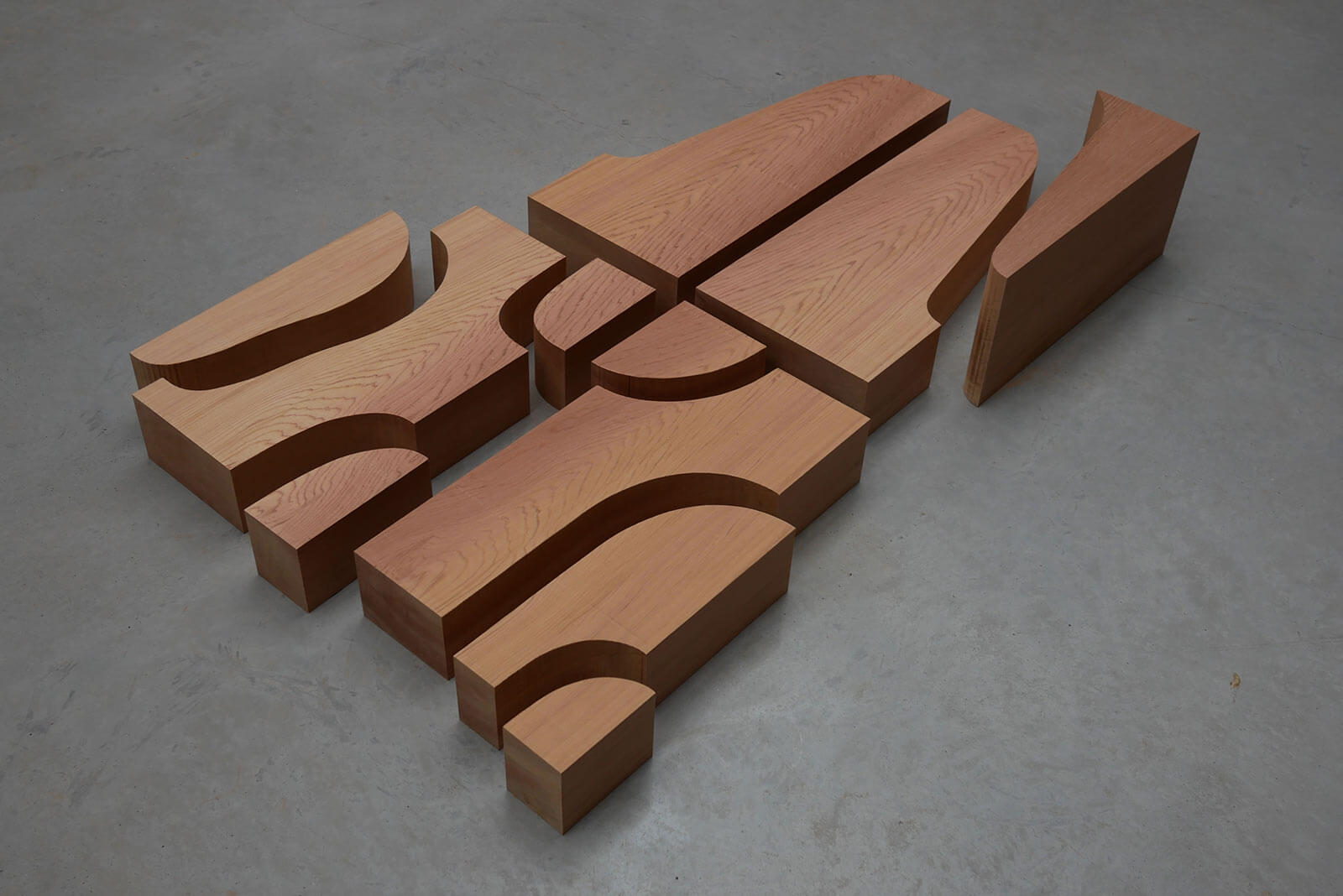
Chair components before assembly and joinery
COURTESY: Max Lamb and Salon 94 Design, New York
The resulting chairs are an interplay of primary and negative forms, a study in how we can produce furniture without leaving any waste material behind. Rearranging the fragments into new sculptural combinations became a generative process, indebted to the masterful implementation of sturdy mortise and tenon joints.
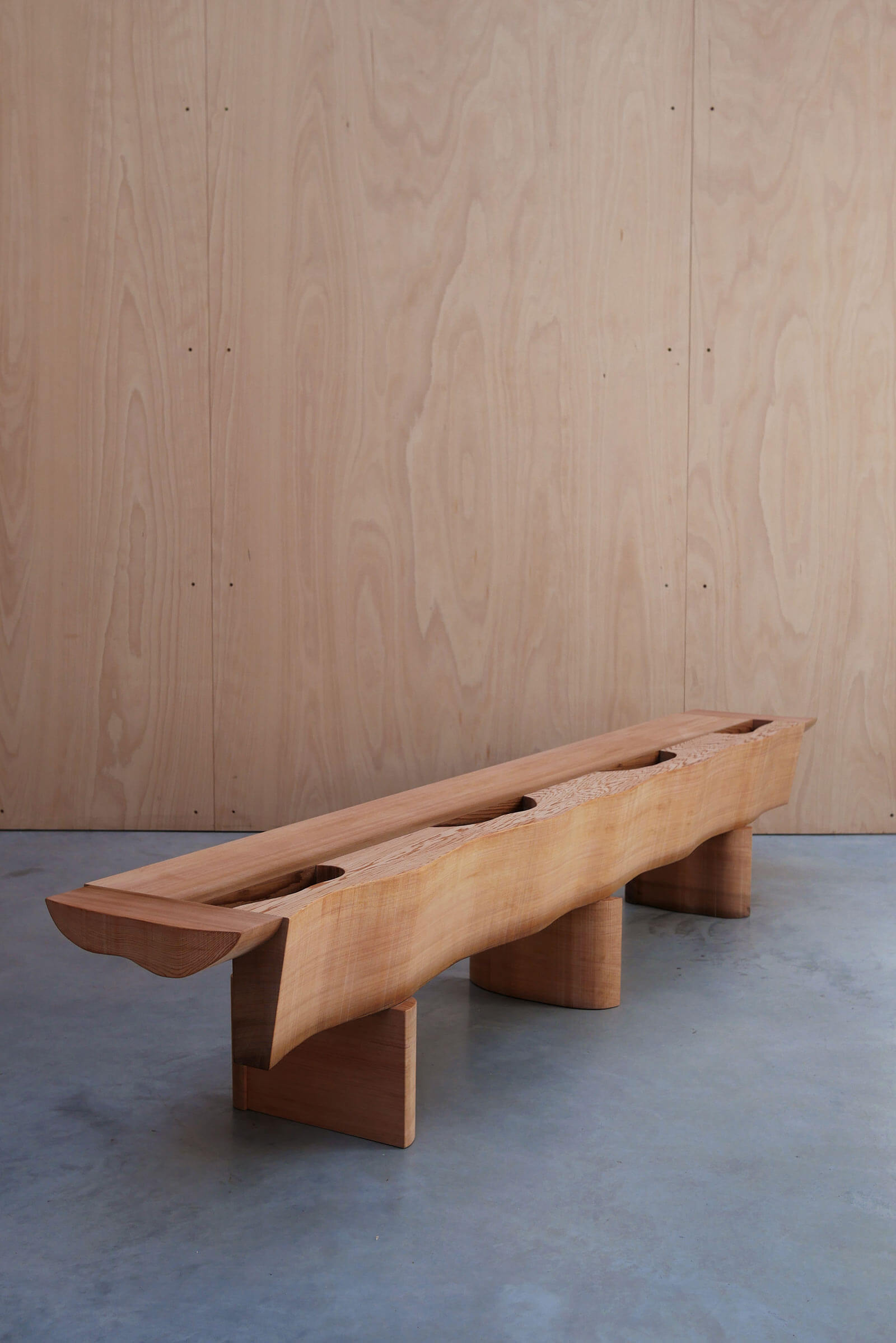
Max Lamb, ‘6 x 8 Bench’, 2021
COURTESY: Max Lamb and Salon 94 Design, New York
“What is taken away cannot be too big or the grain is weakened, but each cut yields a positive, and the benefit of the cut is potential for the block of wood to become something else with a larger surface area with more function,” the designer explains. For him, this approach is like playing chess. Each action is meticulously considered before being carried out.
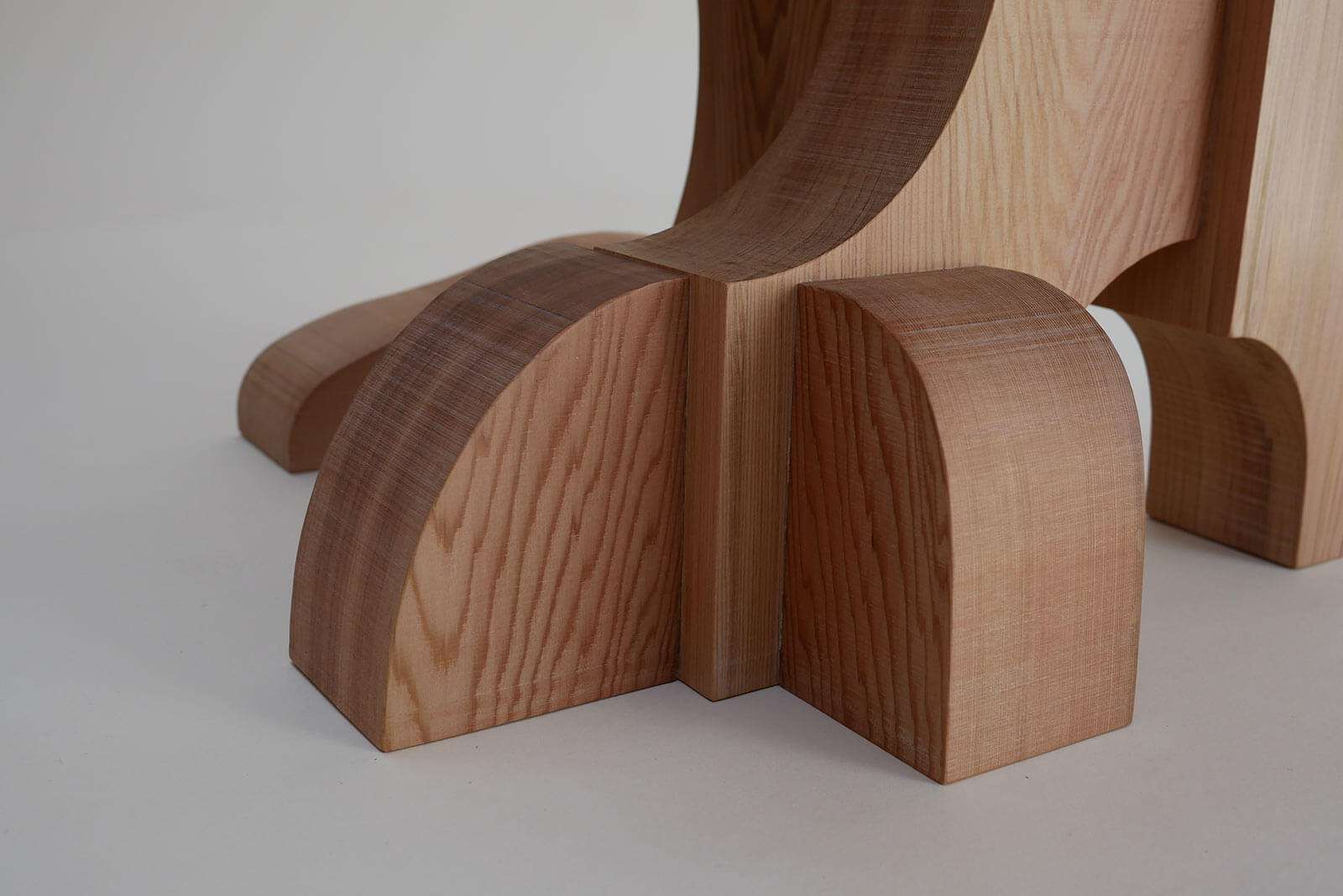
Max Lamb, ‘6 x 8 Chair’, 2021 (detail)
COURTESY: Max Lamb and Salon 94 Design, New York
At the very end of the ground floor gallery space, there is a display case containing early formal studies for this collection. These maquettes reveal Lamb’s innate understanding of proportion, delineated volume and composition. Carefully displayed in procession, the finished pieces ask the viewer to reevaluate the importance of assembly, detail and scale.
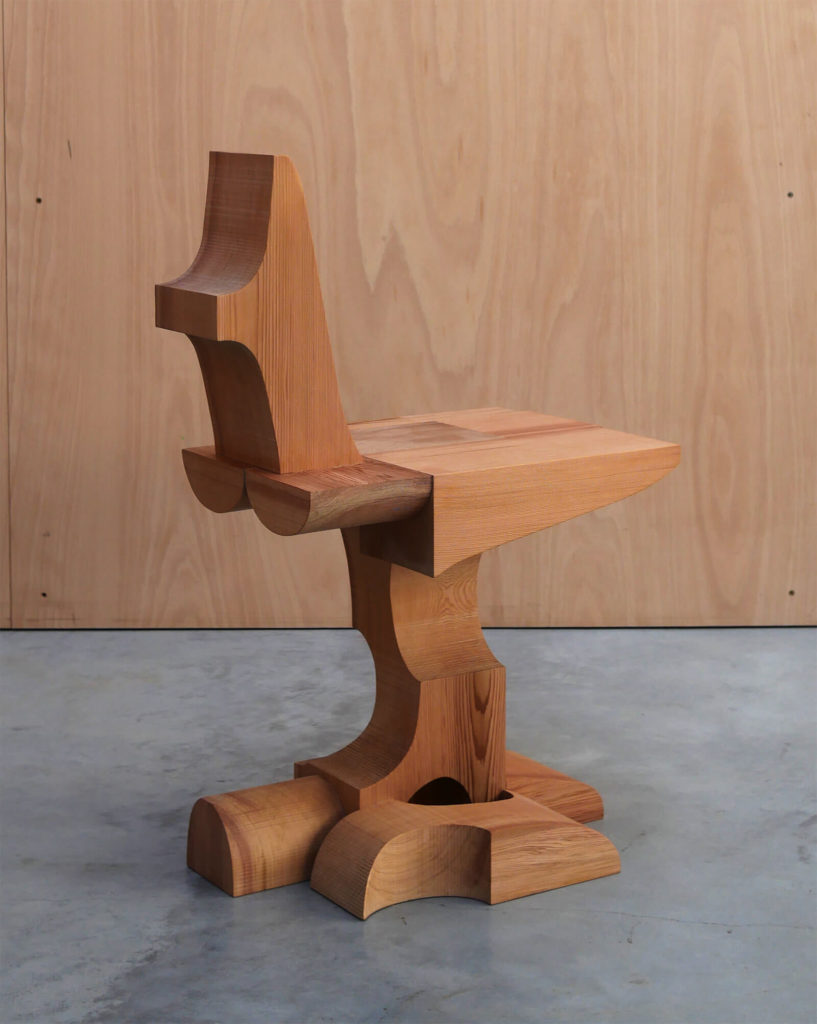
Max Lamb, ‘6 x 8 Chair’, 2021
COURTESY: Salon 94 and Max Lamb
The second ‘Stone’ showcase stems from the designer’s ongoing collaboration with Italian quarry Pedretti Graniti, and his geological survey of its surrounding Trentino mountains. His ‘Tonalite Boulder’ chairs, ‘Dolomite Boulder’ chairs, ‘Campione’ chair prototype, and ‘Feather and Wedge Chair’ are on view. These multiple iterations honour the transformative power of nature and the variable impact of weather conditions on specific locations and raw matter.
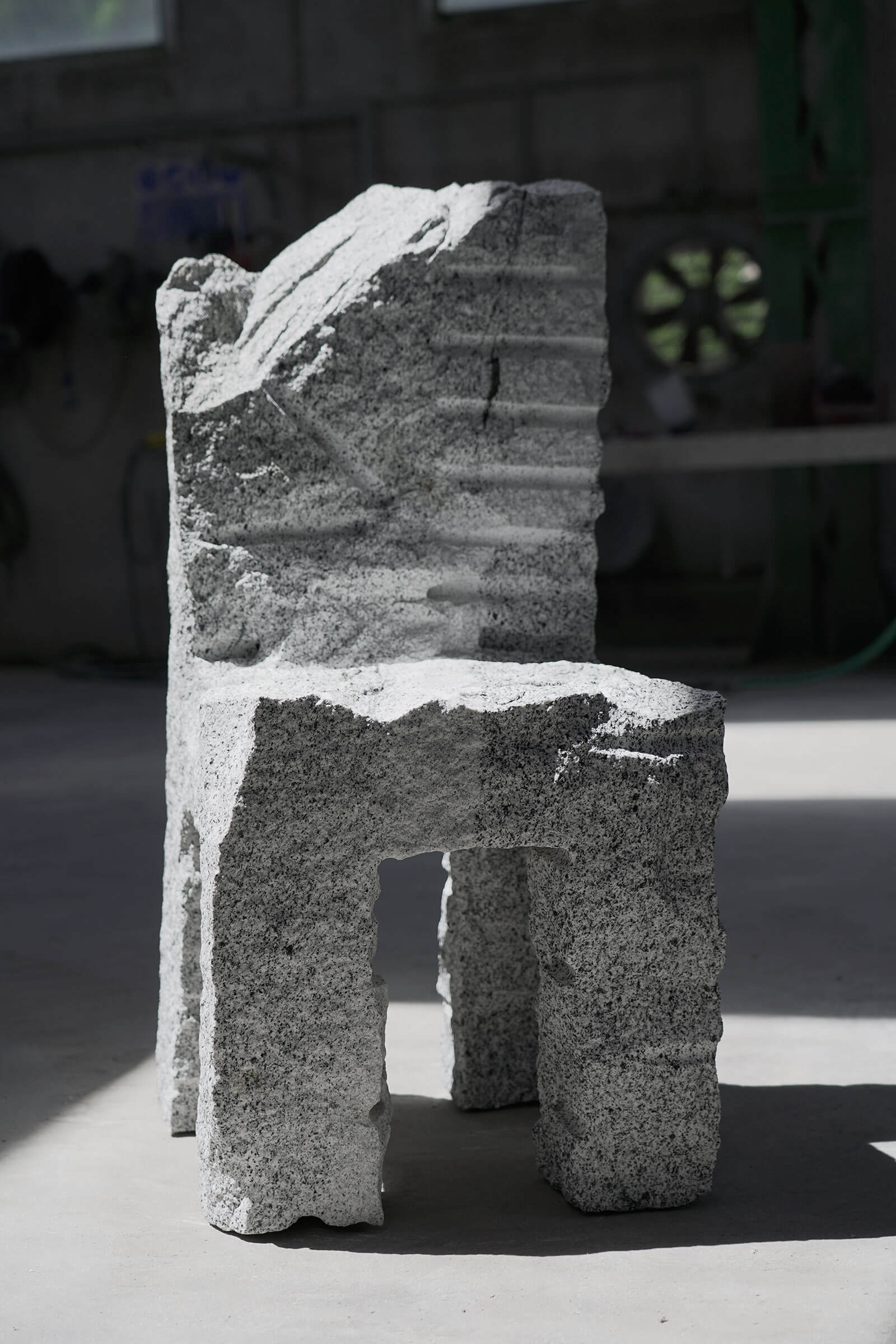
Max Lamb, ‘Feather + Wedge’, 2020
COURTESY: Max Lamb and Salon 94 Design, New York
Whereas the ‘Feather and Wedge Chair’ was produced using an ancient stone-splitting technique and left bare in its ingrained functionality, the ‘Tonalite Boulders’ chairs have the added quality of a 360-degree rotation, thanks to invisible steel barring ballasts. Lamb has worked closely with the stone supplier for the past five years and is unhurried in his harvest. It’s this patience, concentration and attention to detail that bring these two bodies of work together. Produced in wood and stone, these collections remind us that nature also takes its time to perfect, fortify and shape these materials.




